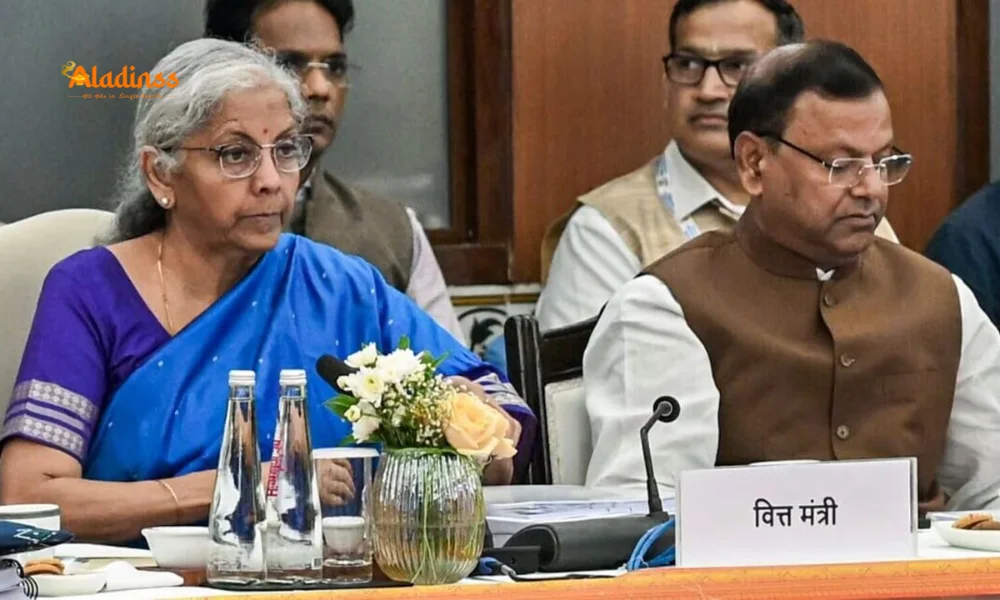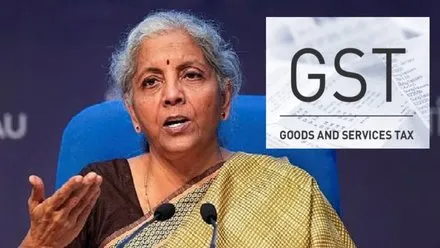56th GST Council Meeting: Two-Tier GST Rates Introduced

56th GST Council Meeting: India Adopts Two-Tier GST Rates of 5% and 18%
In a landmark decision, the 56th GST Council meeting, held in New Delhi on September 4, 2025, has ushered in a significant overhaul of India's Goods and Services Tax (GST) structure. Union Finance Minister Nirmala Sitharaman announced the elimination of the existing 12% and 28% tax slabs, replacing the four-tier system with a streamlined two-tier tax regime of 5% and 18%. This reform, set to take effect from September 22, 2025, aims to simplify taxation, reduce the burden on consumers, and promote economic equity across various sections of society.

Background of the GST Reform
The GST, introduced in 2017, initially operated under four tax brackets: 5%, 12%, 18%, and 28%. This multi-tier system, while comprehensive, often led to complexities in compliance and varying tax burdens across goods and services. In his Independence Day address on August 15, 2025, Prime Minister Narendra Modi emphasized the need for GST reforms to benefit the common man. Following this directive, the Central Government proposed revisions to the GST structure, which were reviewed by a Group of Ministers (GoM) appointed by the GST Council. The 56th GST Council meeting marks the culmination of these efforts, delivering a simplified tax system designed to enhance affordability and accessibility.
Key Highlights of the New GST Structure
The decision to consolidate the GST rates into two slabs—5% and 18%—is a bold step toward simplifying India's tax regime. The elimination of the 12% and 28% slabs is expected to reduce the cost of numerous goods and services, making them more affordable for the average consumer. Additionally, the GST Council has introduced targeted exemptions and a special tax rate for luxury items, ensuring that the tax burden is equitably distributed.
Tax Exemptions for Essential Goods and Services
One of the most significant outcomes of the 56th GST Council meeting is the exemption of several essential items from GST. Union Finance Minister Nirmala Sitharaman announced that milk, paneer, pizza, bread, personal insurance, and medical insurance will now be fully exempt from GST. This move is designed to alleviate the financial burden on households, particularly for low- and middle-income families who rely on these staples. By removing GST on these items, the government aims to make essential goods and services more accessible, thereby supporting the common man, women, students, the middle class, and farmers.
40% Tax on Luxury Items
To balance the tax exemptions and ensure revenue stability, the GST Council has introduced a 40% tax rate exclusively for luxury items, including pan masala and tobacco products. This targeted approach ensures that high-end goods and harmful substances bear a higher tax burden, aligning with the government's commitment to public health and fiscal responsibility. By imposing a steep tax on tobacco products, the government also aims to discourage their consumption, contributing to long-term health benefits for the population.
Impact on Consumers and Businesses
The shift to a two-tier GST system is expected to have far-reaching implications for both consumers and businesses. For consumers, the reduction in tax slabs and exemptions on essential items will translate into lower prices for everyday goods and services. For instance, the exemption of GST on milk and paneer will directly benefit households, while the removal of GST on personal and medical insurance will make these services more affordable, particularly for the middle class and senior citizens.
Businesses, on the other hand, will benefit from the simplified tax structure, which reduces compliance complexities and administrative costs. The elimination of the 12% and 28% slabs streamlines tax calculations, making it easier for businesses to manage their tax obligations. Small and medium enterprises (SMEs), in particular, are likely to benefit from this reform, as it reduces the burden of navigating multiple tax rates.
Benefits for Different Sections of Society
Nirmala Sitharaman emphasized that the new GST regime is designed to benefit all sections of society. For the common man, the exemptions on essentials like milk and bread ensure affordability of basic necessities. Students will benefit from lower costs on educational materials and services, while women and farmers will see reduced expenses on household and agricultural products. The middle class, often burdened by rising costs, will find relief through lower taxes on insurance and other services. This inclusive approach underscores the government's commitment to equitable economic growth.
Economic and Policy Implications
The GST reform is a significant step toward achieving a more transparent and efficient tax system in India. By reducing the number of tax slabs, the government aims to minimize tax evasion and improve compliance. The introduction of a 40% tax on luxury items ensures that the revenue loss from exemptions and lower tax rates is offset, maintaining fiscal stability. Economists predict that the simplified GST structure will boost consumer spending, stimulate economic growth, and enhance India's competitiveness in the global market.
Moreover, the reform aligns with the government's broader vision of economic inclusivity. By prioritizing exemptions for essential goods and services, the GST Council has demonstrated its commitment to supporting vulnerable sections of society. The decision to impose higher taxes on luxury and harmful products reflects a balanced approach to revenue generation and public welfare.
Implementation and Future Outlook
The new GST regime will come into effect on September 22, 2025, giving businesses and consumers a short transition period to adapt to the changes. The GST Council has assured stakeholders that it will closely monitor the implementation to address any challenges that may arise. The government is also expected to launch awareness campaigns to educate businesses and consumers about the new tax structure and its benefits.
Looking ahead, the GST reform sets the stage for further improvements in India's tax system. Experts suggest that the simplified structure could pave the way for additional reforms, such as the inclusion of petroleum products under GST or the introduction of technology-driven compliance mechanisms. For now, the focus remains on ensuring a smooth transition and maximizing the benefits of the two-tier tax system for all stakeholders.
Comment / Reply From
No comments yet. Be the first to comment!











